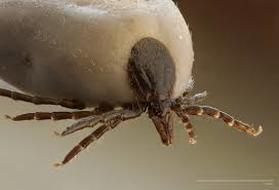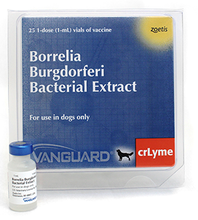Tick Talk
- Ticks are found in many areas across Canada, including southern Ontario
- Ticks come in various sizes and shapes based on the stage of life they are at
- Ticks have a two year life cycle
- Ticks begin questing (looking for a blood meal) when temperatures reach 4oC and higher!
- Ticks can transmit disease (such as Lyme) to animals and people when they take a blood meal
- Protecting your pets can and should begin before the risk is present
- There is a vaccine available for prevention of Lyme disease
- Testing for tick diseases as easy as taking a few drops off blood from your pet, and results are ready in 10 minutes! Annual testing is recommended
Tick Life Cycle
- Ticks have a 2 year life cycle
- Female ticks start questing when the temperature reaches 4oC and higher, they engorge with blood and drop off to lay eggs, up to 3000 of them
- 6 legged larva hatch through the spring & summer
- Larva feed on small hosts, then drop off and moult into 8 legged nymphs
- Nymphs feed on hosts during the summer and fall and then drop off to lay dormant over the winter
- Nymphs then moult into adults (males and females). Adult females will feed on larger hosts, engorge, mate and fall off to lay eggs in the fall
- Females will then die after egg laying and the cycle begins again
Ticks and Lyme Disease
Lyme disease is caused by the spirochete Borrelia burgdorferi. Infected blacklegged ticks can spread Lyme disease to humans and pets through their bite. Ticks are very small and their bites are usually painless.
Canine illness does occur with infection, but unlike with humans, it may not begin to manifest for weeks to months after infection at which point joint pain is typically noticed. Sometimes there is a also a fever. A dog’s most serious long-term consequence is kidney disease.
Life Cycle and Transmission
Blacklegged ticks (the deer tick, Ixodes scapularis), are the
carriers of Lyme disease, and are most often found in forests and the overgrown areas between woods and open
spaces. When the nymph (juvenile) or adult is feeding it may infect its host with the Lyme spirochete if they are carrying it.
The feeding tick regurgitates assorted enzymes to keep the blood flow liquid and smooth. It is during this regurgitation process that the Lyme spirochete is brought up from the tick’s mid-gut to its mouth-parts and subsequently injected into the host.
This process requires a minimum of 24-48 hours, which means that if the tick is removed within 24 hours after attaching, the spirochete typically cannot be transmitted and the host will not get the disease.
Testing
The 4DX snap test is simple and is performed in the veterinary clinic and only requires a small blood sample. Results are available in approximately 10 minutes. The test includes a heartworm test, Lyme test and test for Ehrlichia and Anaplasma (two other tick born diseases). If dogs test positive on this test for Lyme disease, an additional test is then performed at a laboratory to obtain a numerical value to better assess severity and plan a treatment and monitoring protocol. Vaccinated dogs will not test positive with the C6 antigen snap test or quantitative test. Dogs will test positive within to 3 to 5 weeks of infection and may continue to stay positive for over a year even despite treatment.
Treatment
Treatment of Lyme disease utilizes a 4 week course of an antibiotic called doxycycline. Clinical symptoms (joint pain, fever etc) often resolve within 48 hours. Eradication of the Lyme spirochete is not often achievable despite treatment; the organism is simply too good at hiding. The goal instead is to have the organism remain in a latent state but not causing active infection.
It has therefore recommended that dogs with positive Borrelia burgdorferi antibody levels be regularly screened for kidney disease and protein loss in their urine.
Prevention
- Removing ticks that are embedded in skin within 24 hours of attachment can aid in prevention. Use tweezers or tick twisters to carefully grasp the tick as close to the skin as possible and either pull slowly upward or gently and slowly twist, causing the tick to detach. care must be taken to avoid crushing the tick.
- There are several effective tick control products available including: K9 Advantix (monthly topical), Bravecto (oral chew, lasts 3 months), Nexgard (monthly oral chew), Credillio, Simparica and the Preventic® collar. All of these products either kill the tick and/or cause it to be repelled and drop off (see below for comparison). It is important to note that not all tick control products kill every species of tick and most are not labelled for the prevention of disease.
Lyme vaccination is and has been available for dogs for quite some time and has been shown to be very effective. This is especially true of new variants of this vaccine which have come out most recently in 2017! Vaccination induces antibodies to OspA, OspC, and a variety of other antigens. When a tick feeds and takes in blood with antibody, the Lyme spirochete is killed within the tick before it has injected into the animal but also inactivated in the animal itself as well.
Endemic Areas in Ontario
In Ontario, there are seven known endemic areas: Pointe-Pelee National Park, Rondeau Provincial Park, Turkey Point Provincial Park, Long Point peninsula including Long Point Provincial Park and the National Wildlife area, Wainfleet bog near Welland on the Niagara peninsula, Prince Edward Point and parts of the Thousand Islands National Park. Risk areas are locations around Kingston and along the Saint Lawrence valley to the border with Quebec that extend north east towards Ottawa. Risk areas have also been identified in western Ontario in the region of Lake of the Woods and at Pinery Park on the shore of Lake Huron.
Product Comparison (Deer/Lyme tick preventatives)
1. NexGard (Merial) - Monthly Soft Beef Flavoured (artificial, soy based) Chewable Tablet for Dogs - for the treatment and control of flea infestations and adult ticks. Is given with or without food. Customer mail in rebates available!
2. Bravecto (Merck) - Chewable tablet (hydrolyzed pork liver) given once every 12 weeks (3 months) For the treatment and control of flea and tick infestations
* Must remember to administer this medication every 3 months with food, some require more frequent dosing. customer mail in rebates available!
3. K9 Advantix II (Bayer) - monthly topical solution - For control of fleas and adult ticks. Allows for killing on contact vs biting and has some repellant activity
* Duration of protection may be shortened by shampooing, water immersion or exposure to rain.
* Product is toxic to cats when ingested.
4. Simparica (Zoetis) - once monthly oral chew (pork liver flavour) - for control of fleas and ticks. Can be given with or without food.
5. Preventic Collar (Virbac) - for the treatment and control of tick infestations. Collar lasts 90 days.
* It is recommended to remove the collar for bathing or swimming and to reapply once dog is dry.
* Toxic to cats.
* Not effective for fleas.
6. Credelio (Elanco) - once monthly oral chew for control of ticks and fleas
7. New products are always being developed and are on the horizon for release
If a pet owner is concerned about Lyme disease, we recommend annual vaccination and a suitable paraciticide that matches your pets needs. As a general rule, with the currently available products, for good tick control, in our opinion, a separate product, used in combination, will be required for heartworm and intestinal parasite control vs an all in one product.
Reported Cases of Lyme Disease in Dogs (Ontario Only) between 2012-2015
- 2012: 83 cases
- 2013: 861 cases
- 2014: 1316 cases
- 2015: 1339 cases
- 2016: 1381 cases (52 cases within a 50 km radius of Woodstock!)
The Government of Canada data for Lyme disease cases reported between 2010 and 2015:
- 2010: 143 cases
- 2011: 266 cases
- 2012: 338 cases
- 2013: 682 cases
- 2014: 522 cases
- 2015: 917 cases
- 2016: 841 preliminary cases



